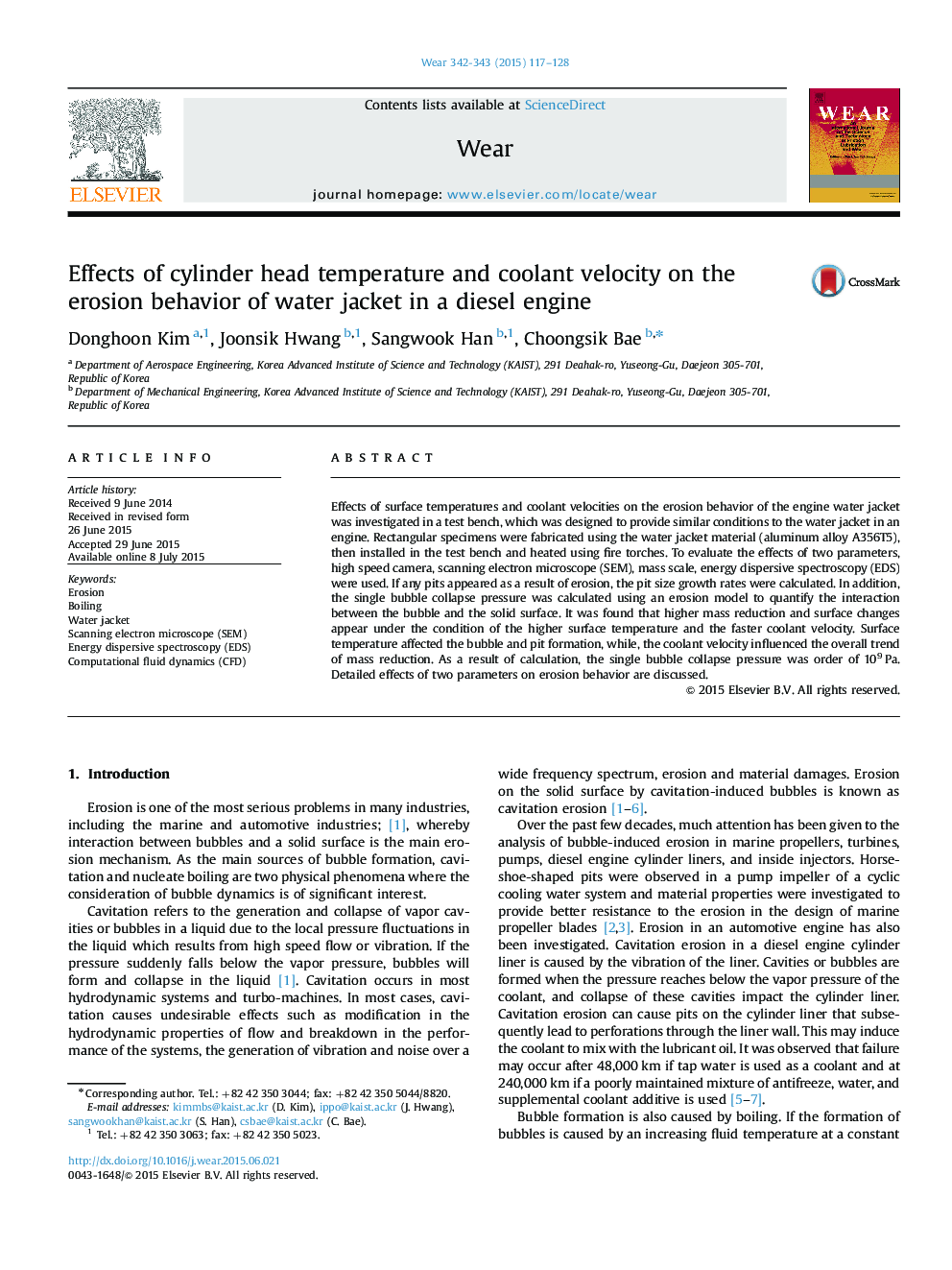| Article ID | Journal | Published Year | Pages | File Type |
|---|---|---|---|---|
| 616987 | Wear | 2015 | 12 Pages |
Abstract
Effects of surface temperatures and coolant velocities on the erosion behavior of the engine water jacket was investigated in a test bench, which was designed to provide similar conditions to the water jacket in an engine. Rectangular specimens were fabricated using the water jacket material (aluminum alloy A356T5), then installed in the test bench and heated using fire torches. To evaluate the effects of two parameters, high speed camera, scanning electron microscope (SEM), mass scale, energy dispersive spectroscopy (EDS) were used. If any pits appeared as a result of erosion, the pit size growth rates were calculated. In addition, the single bubble collapse pressure was calculated using an erosion model to quantify the interaction between the bubble and the solid surface. It was found that higher mass reduction and surface changes appear under the condition of the higher surface temperature and the faster coolant velocity. Surface temperature affected the bubble and pit formation, while, the coolant velocity influenced the overall trend of mass reduction. As a result of calculation, the single bubble collapse pressure was order of 109Â Pa. Detailed effects of two parameters on erosion behavior are discussed.
Keywords
Related Topics
Physical Sciences and Engineering
Chemical Engineering
Colloid and Surface Chemistry
Authors
Donghoon Kim, Joonsik Hwang, Sangwook Han, Choongsik Bae,
